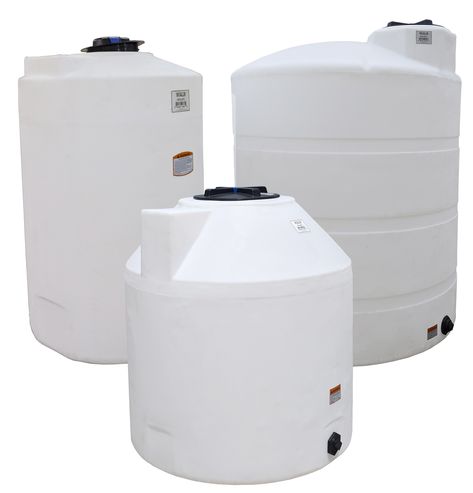Algae and Bacterial Growth Prevention: Effective Strategies for Clean Tanks
Table of Contents
-
Introduction to Algae and Bacterial Growth Prevention
-
Why Algae and Bacteria Thrive in Tanks
-
Key Methods for Algae and Bacterial Growth Prevention
-
Using Opaque Materials to Block Sunlight
-
Ensuring Proper Water Circulation
-
Regular Cleaning and Maintenance
-
Chemical Treatments for Microbial Control
-
-
Additional Tips for Microbial Growth Prevention
-
Conclusion
Introduction to Algae and Bacterial Growth Prevention
Algae and bacterial growth prevention is critical for maintaining clean and safe tanks, whether for water storage, aquariums, or industrial applications. Uncontrolled microbial growth can lead to water contamination, foul odors, and even health risks. By implementing effective strategies like blocking sunlight and improving water circulation, you can significantly reduce the risk of algae and bacteria thriving in your tanks. This blog post explores practical methods to keep your tanks clean and microbial-free.
Why Algae and Bacteria Thrive in Tanks
Algae and bacteria flourish in environments with favorable conditions, such as:
-
Sunlight Exposure: Algae require sunlight for photosynthesis, making transparent or translucent tanks prone to growth.
-
Stagnant Water: Poor water circulation creates a breeding ground for bacteria and algae.
-
Nutrient Availability: Organic matter or chemical residues in tanks provide nutrients for microbial growth.
-
Warm Temperatures: Higher temperatures accelerate the reproduction of algae and bacteria.
Understanding these factors is the first step in algae and bacterial growth prevention. By addressing these conditions, you can create an environment that discourages microbial proliferation.

Key Methods for Algae and Bacterial Growth Prevention
Implementing the right strategies is essential for effective algae and bacterial growth prevention. Below are the most effective methods to keep your tanks clean.
Using Opaque Materials to Block Sunlight
Sunlight is a primary driver of algae growth. Using opaque materials for tank construction or covering is a simple yet effective method for algae and bacterial growth prevention.
-
Opaque Tanks: Tanks made of dark or non-transparent materials, such as black plastic or stainless steel, block sunlight and inhibit algae photosynthesis.
-
Tank Covers: For existing transparent tanks, UV-resistant covers or wraps can reduce light penetration.
-
Shading: Positioning tanks in shaded areas or using external shades can further minimize sunlight exposure.
By eliminating sunlight, you disrupt the conditions algae need to grow, making this a cornerstone of algae and bacterial growth prevention.
Image: An opaque tank designed to prevent algae growth by blocking sunlight.
Ensuring Proper Water Circulation
Stagnant water is a breeding ground for bacteria and algae. Proper water circulation is a critical component of algae and bacterial growth prevention.
-
Pumps and Aerators: Installing water pumps or aerators keeps water moving, reducing the chance of microbial buildup.
-
Filtration Systems: High-quality filtration systems remove organic matter and debris that fuel algae and bacterial growth.
-
Regular Water Changes: For smaller tanks like aquariums, periodic water changes prevent stagnation and nutrient accumulation.
Circulating water disrupts the still environment that microbes thrive in, making it an essential practice for clean tanks.
Regular Cleaning and Maintenance
Routine maintenance is vital for algae and bacterial growth prevention. Neglected tanks quickly become havens for microbial growth.
-
Manual Scrubbing: Physically scrubbing tank walls removes algae and biofilm before they spread.
-
Emptying and Drying: Periodically draining and drying tanks eliminates residual microbes.
-
Inspecting Components: Regularly check pumps, filters, and pipes for clogs or contamination.
Consistent cleaning ensures that algae and bacteria have little opportunity to establish themselves.
Chemical Treatments for Microbial Control
In some cases, chemical treatments can enhance algae and bacterial growth prevention efforts. However, these should be used cautiously to avoid harming the environment or tank users.
-
Algaecides: Copper-based or other EPA-approved algaecides can control algae growth.
-
Chlorine or UV Treatments: Low-dose chlorine or UV sterilization can kill bacteria without compromising water safety.
-
Biofilm Inhibitors: Specialized chemicals prevent biofilm formation, a common precursor to bacterial growth.
Always follow manufacturer guidelines and local regulations when using chemical treatments for algae and bacterial growth prevention.
Additional Tips for Microbial Growth Prevention
Beyond the core methods, here are additional tips to enhance algae and bacterial growth prevention:
-
Monitor Water Quality: Regularly test water for pH, nutrient levels, and microbial content to catch issues early.
-
Control Nutrient Inputs: Avoid overfeeding in aquariums or allowing organic debris to enter storage tanks.
-
Use Beneficial Bacteria: In some systems, introducing beneficial bacteria can outcompete harmful microbes.
-
Insulate Tanks: Maintain cooler water temperatures to slow microbial reproduction.
These proactive measures complement the primary strategies for algae and bacterial growth prevention, ensuring long-term tank cleanliness.
Conclusion
Algae and bacterial growth prevention is achievable with the right combination of strategies. By using opaque materials to block sunlight, ensuring proper water circulation, maintaining regular cleaning schedules, and selectively using chemical treatments, you can keep your tanks free from harmful microbes. Implementing these methods not only preserves water quality but also extends the lifespan of your tank systems. Start applying these algae and bacterial growth prevention techniques today for cleaner, safer tanks.